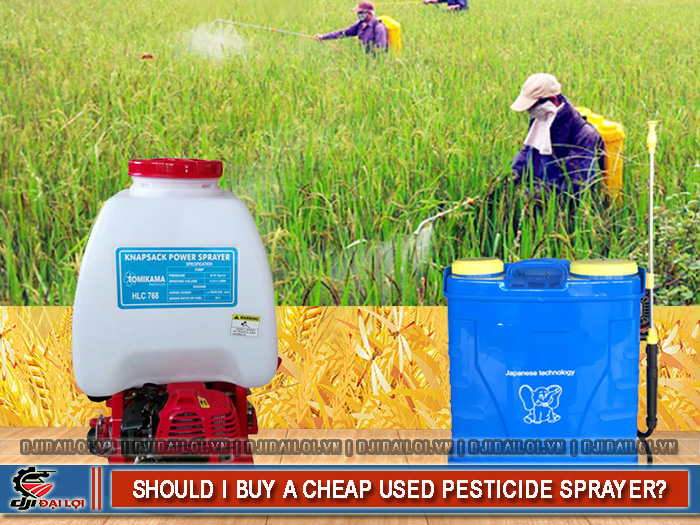
As one of the essential tools in agriculture-alongside modern agricultural drones-pesticide sprayers are not cheap, especially genuine or advanced models. Therefore, when the market offers many low-priced used sprayers, interest naturally rises. Yet, cost-saving decisions often bring many questions about durability, safety, and practical efficiency.
In small-scale vegetable, rice, coffee, or fruit farming areas, buying used machines may seem economical but carries risks-especially for users with limited technical knowledge or when purchasing through unreliable intermediaries. Let’s explore the overall picture and reasons why this topic is becoming increasingly common.
When thinking about buying a used pesticide sprayer, users should carefully assess five crucial factors before spending money:
Used sprayers may have been in service for 1–5 years or longer. Without knowing their actual working hours or repair history, risks increase significantly. For gasoline or electric sprayers, parts such as pumps, nozzles, and hoses tend to degrade after three years of continuous use.
Used machines often show weak or uneven spray patterns due to worn pumps or nozzles, resulting in poor pest control. This not only wastes chemicals but can also harm crops.
Finding replacement parts for older or discontinued models can be difficult. Improvising components may pose safety hazards or cause further damage.
Old machines often use more chemicals due to leaks or inaccurate spraying. Gas-powered models may consume excessive fuel, raising operation costs per season.
Most used sprayers come without warranty. Buying from unreliable sources may lead to serious safety risks like leaks, electrical faults, or fires.
|
Criteria |
New sprayer |
Used sprayer |
|---|---|---|
|
Initial cost |
High (~2–20 million VND) |
30–60% lower |
|
Spraying performance |
Stable, consistent |
Often weak, uneven |
|
Durability & lifespan |
3–7 years depending on type |
1–3 years remaining |
|
Warranty & after-sales |
6–24 months |
Usually none |
|
Fuel/chemical efficiency |
Optimized |
Wasteful if nozzle is damaged |
|
Repair & maintenance |
Easy to find parts |
Hard to repair, scarce parts |
Summary:
While it saves money upfront, a used sprayer may involve:
Buying a used pesticide sprayer can be a reasonable cost-saving option-if you have inspection experience and buy from a reputable source. However, low prices often come with trade-offs in performance, safety, and repair costs. Carefully assess your actual needs, budget, and technical skills. For long-term or large-area farming, investing in a new, genuine sprayer remains the safer and more efficient choice.
Only lightweight backpack models or used drones with strong motors are advisable. Slopes can affect spray balance if the machine is weak or misaligned.
Under Circular 21/2015/TT-BNNPTNT, only spraying drones require registration. Handheld sprayers do not, but periodic safety checks are recommended.
Avoid discontinued, unclear-origin, or old Japanese domestic models-they have scarce spare parts.
Mostly not, since older sprayers can’t produce fine droplets needed for microbe-based solutions. Choose modern models instead.
Only replace nozzles and check pumps regularly. Using incompatible or makeshift parts can cause leaks and reduced performance.